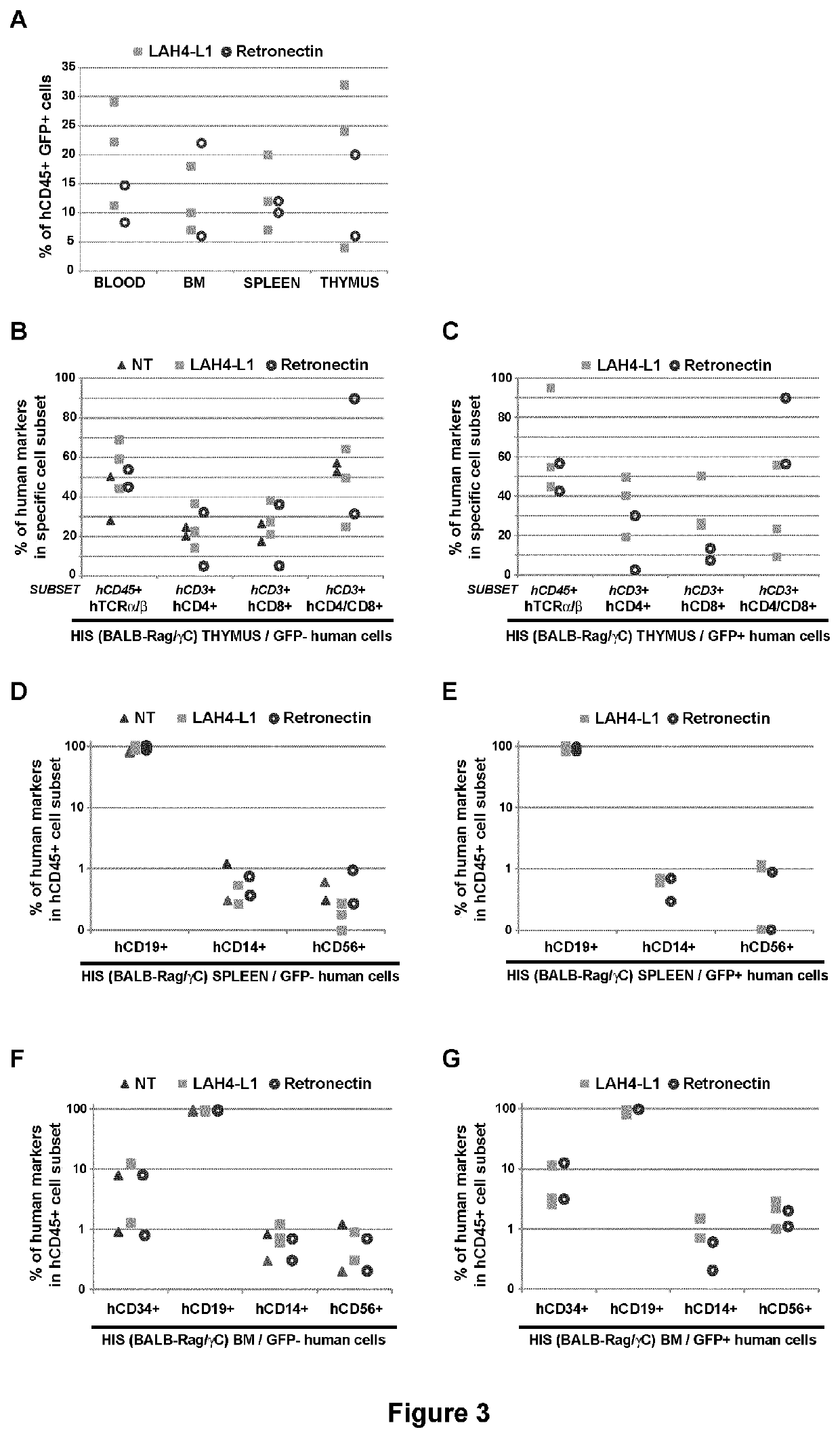Peptides with viral infection enhancing properties and their use
a technology of peptides and viral infections, applied in the field of peptides with viral infection enhancing properties and their use, can solve the problems of difficult to establish purification protocols for some lvs, hampered gene therapy approaches, and inability to obtain highly infectious titers, etc., and achieve the effect of promoting the transduction efficiency of viruses
- Summary
- Abstract
- Description
- Claims
- Application Information
AI Technical Summary
Benefits of technology
Problems solved by technology
Method used
Image
Examples
examples
Materials and Methods
Peptides and Reagents
[0132]Peptides were produced by standard Fmoc solid-phase peptide synthesis, purified by preparative RP HPLC and analyzed by HPLC and MS (Genecust, Dudelange, Luxembourg). All the peptides were amidated at their C-terminal end, except LAH4-A4-dNH2 and SEVI. 7-amino-actinomycin D (7-AAD) was obtained from Sigma-Aldrich (St Quentin Fallavier, france). Retronectin was from Takara Bio Inc. (St-Germain-en-laye, France). pEGFP-C1 plasmid was from Clontech (St-Germain-en-laye, France). Antibodies were from Miltenyi (Paris, France).
[0133]In addition to the peptides represented in SEQ ID NOs: 1-27, the following peptides have also been used in the present study:
[0134]
(SEQ ID NO: 28)LAH4-A4-KKALLHAALAHLLPLAHHLLALLKKA.P14:(SEQ ID NO: 29)LAK4-L1:KKALLAKALKLLALLALKLAKALKKA(SEQ ID NO: 30)LAH8-L1:HHALLAHALHLLALLALHLAHALHHA(SEQ ID NO: 31)LAH4-L1-ALLAHALHLLALLALHLAHALAdK:(SEQ ID NO: 32)LAH4-L1-ALLAHALHLLALLALHLAHALKKAdKN:(SEQ ID NO: 33)LAH4-A4-ALLHAALAHLLALA...
PUM
| Property | Measurement | Unit |
|---|---|---|
| pH | aaaaa | aaaaa |
| hydrophilic angle | aaaaa | aaaaa |
| hydrophilic angle | aaaaa | aaaaa |
Abstract
Description
Claims
Application Information
 Login to View More
Login to View More - R&D
- Intellectual Property
- Life Sciences
- Materials
- Tech Scout
- Unparalleled Data Quality
- Higher Quality Content
- 60% Fewer Hallucinations
Browse by: Latest US Patents, China's latest patents, Technical Efficacy Thesaurus, Application Domain, Technology Topic, Popular Technical Reports.
© 2025 PatSnap. All rights reserved.Legal|Privacy policy|Modern Slavery Act Transparency Statement|Sitemap|About US| Contact US: help@patsnap.com



